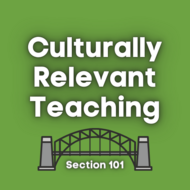DNA Profiling Activity
(View Complete Item Description)This multi-part lesson is designed to give students a firm understanding of genetic profiling using short tandem repeats (STRs), which is a process used by forensics labs around the world. In Part 1 of this lesson, students learn the basics of DNA profiling, including the structure and inheritance of STRs. In Part 2, students learn how DNA profiles are compiled with STRs that are typically used in forensic investigations. In Part 3, they work through a case study involving a robbery and build a DNA profile that can be compared to one constructed from a DNA sample left by a suspect at the scene of the crime. Throughout, analysis questions walk students through calculations on allele frequency and probability (using real data from national databases), providing opportunities for formative assessments on students’ understanding of DNA fingerprinting applications.
Material Type: Lesson Plan













